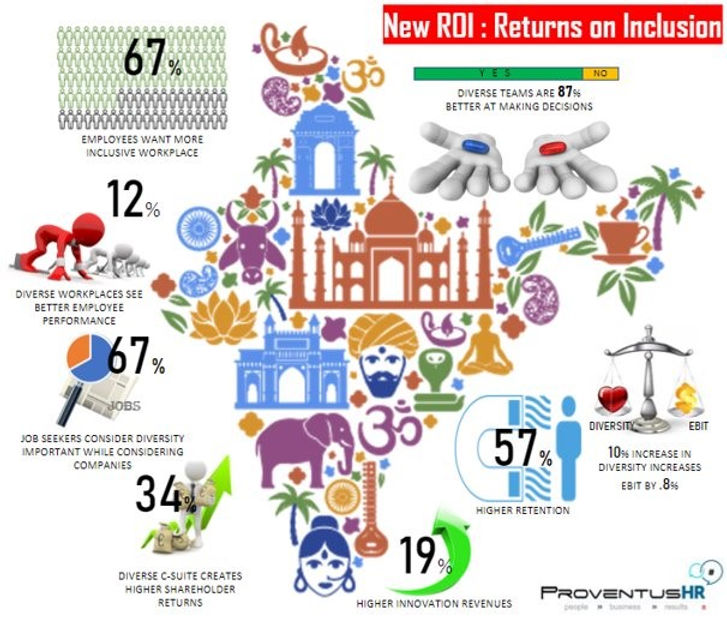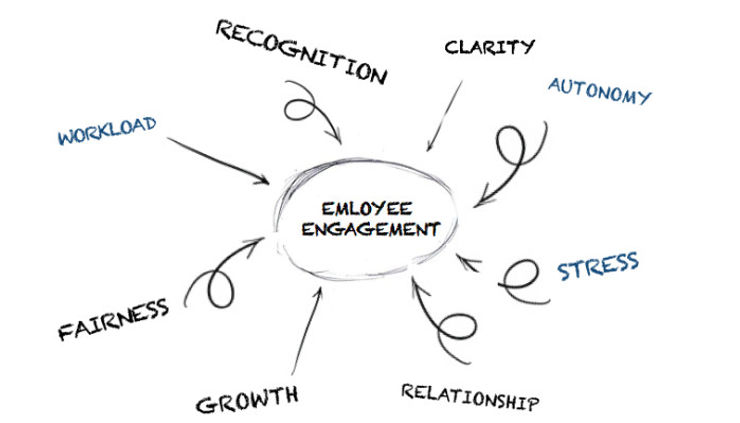“Diversity” and “Inclusion” have become nearly inseparable in our collective jargon, when it comes to measuring impact or creating initiatives, the vast majority of our attention falls upon diversity. The two concepts are related to each other but yet are very distinct in terms of their context and impact on the workplace. Diversity is about the representation in an organization – a representation of many aspects of talent and business. Inclusion is about how the employees and stakeholders and society at large are included in organizational processes as well as how the contributions, presence and perspectives of different groups of people are valued and the perception of it all.
Diversity is very easy to measure and quantify, whereas inclusion is difficult to define, let alone measure. I would compare Inclusion and Diversity to being like the Art and Science of having a heterogeneous workforce. Intuitively, it makes sense that inclusion would influence diversity, or in fact, inclusion is a requirement to establish or grow diversity: if a company fails to be inclusive toward employees, especially those whose characteristics differ from the characteristics of majority employees, the company will find it hard both to recruit and to retain a diverse workforce. On the other hand, if a company has a strong reputation of being inclusive, it’s more likely that someone from a different background will be willing to start working there, even if the company is fairly homogeneous.
According to Deloitte, diverse companies enjoy 2.3 times higher cash flow per employee. Gartner found that inclusive teams improve team performance by up to 30 percent in high-diversity environments. In a BCG study, companies with diverse management teams had a 19 percent increase in revenue compared to their less diverse counterparts.
There is tremendous amount of research (*Catalyst) that has found that Diversity and Inclusion benefit individuals, organizations, teams, and the society. Broadly classifying the impact into four areas in which diversity and inclusion have significant impact: these are seen as talent, innovation and group performance, reputation and responsibility, and financial performance.
Talent
Companies with higher levels of diversity and with HR policies and practices that focus on diversity are linked to lower levels of employee turnover. Employee experiences of inclusion contribute to engagement and retention.
- Thirty-five percent of an employee’s emotional investment to their work and 20% of their desire to stay at their organization is linked to feelings of inclusion
Organizations with strong “diversity climates” (i.e., inclusive work cultures characterized by appreciation of individual differences and the adoption of practices to advance underrepresented groups) are likely to increase employees’ job satisfaction and commitment to the company.
- Strong diversity climates are also associated with reduced instances of interpersonal aggression and discrimination.
When employees feel both included and that their employer supports diversity, they report experiencing trust and increased engagement at work.
- A 10% increase in perceptions of inclusion improves absenteeism, adding nearly one day a year in work attendance per employee
Innovation & Group Performance
Diverse Teams Are Critical for Innovation: When companies establish inclusive business cultures and policies, they are more likely to report
- 59.1% increase in creativity, innovation, and openness.
- 37.9% better assessment of consumer interest and demand.
Diverse management teams are innovative and earn a premium for their innovation. According to one recent study, over a period of three years companies with higher diversity in management earned 38% more of their revenues, on average, from innovative products and services than those companies with lower diversity.
Diversity reduces Groupthink and enhances Decision-Making: Diversity is a key ingredient for better decision-making among teams. Homogenous groups may be susceptible to groupthink, while diverse teams can leverage a greater variety of perspectives and are likely to consider information more thoroughly and accurately.
Inclusion Is Key to Team Performance: Increasing the representation of women on sales teams contributes to improved team performance through enhanced relational skills and organizational citizenship behaviors, among other factors. However, teams are more likely to reap the benefits of diversity on team performance when inclusion is part of the organizational culture.
Employees experience inclusion at work when they feel valued, trusted, authentic, and psychologically safe
- Overall experiences of inclusion explain
- 49% of team problem-solving.
- 18% of employee innovation.
Reputation and Responsibility
Organizations with inclusive business cultures and practices are 57.8% more likely to improve their reputations.
- Consumers are more likely to purchase, or consider purchasing, a product after viewing an advertisement perceived to be diverse or inclusive.
- Employees who view their workplace as inclusive are also likely to consider their organization to have ethical value.
Boardroom Diversity strengthens Environmental, Social, and Governance Performance
Financial Performance
The Harvard Business Review found a statistically significant relationship between diversity and innovation outcomes. The most diverse enterprises—in terms of migration, industry, career path, gender, education, age—were also the most innovative, as measured by their revenue mix. Each of the six dimensions of diversity were correlated with innovation, but industry, nation of origin, and gender had even larger effects on companies’ revenue.
Diversity is a competitive differentiator 一 McKinsey found that for every 10 percent increase in gender diversity, EBIT rose by 3.5 percent. Companies with significantly more racial and ethnic diversity are 35 percent more likely to outperform competitors. Harvard Business Review also discovered that diverse companies are 70 percent more likely to capture new markets, which, in turn, yields higher performance.













